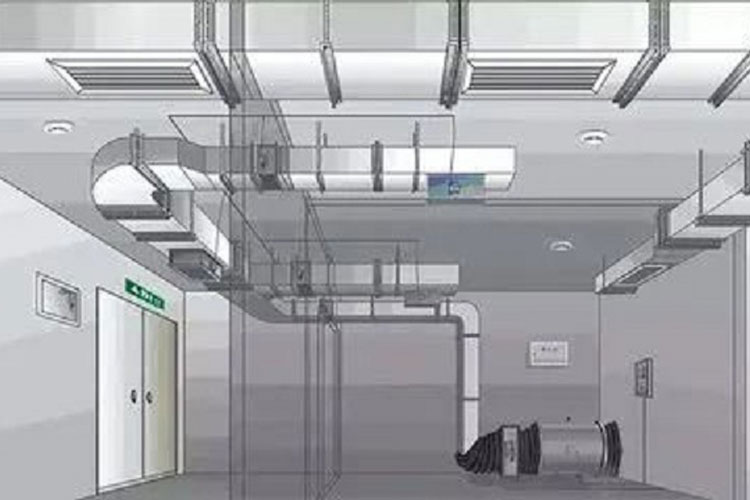

SEARCH
Smoke control and exhaust systems are widely used in the field of construction, among which, based on the needs of safety and standard requirements, the development of fireproof material technology has become a new hot spot. What fireproof material should be selected for smoke control and exhaust system?

First, the harm of smoke
We summarize the damage caused by fire smoke into the following four small points:
Hypoxia: The oxygen content in the smoke is generally lower than the value required for normal physiology, the lower the oxygen content, the more likely human health is to be seriously injured.
Toxic substances: The smoke contains a high concentration of toxic substances, which can seriously cause death.
Harmful suspended particulates: Due to the diffusion of gas, harmful suspended particulates can enter the human lungs and adhere to and gather on the alveolar wall, which is easy to cause respiratory diseases and other diseases.
High temperature: fire smoke also has high temperature characteristics, at the fire site, the temperature of the smoke can even reach several hundred degrees. When the temperature is too high, it will cause irreversible damage to the human body.
Therefore, the application of smoke control and exhaust duct system in all kinds of buildings is very necessary, especially under the provisions of mandatory provisions, how to ensure and improve the stability and safety of smoke control and exhaust system is a problem that people must consider in planning smoke control and exhaust system.
The smoke control and exhaust system includes two concepts: smoke control and smoke exhaust. In this article, we mainly talk about "smoke prevention".
Second, what is the basic approach to smoke prevention?
In the national standard "Technical Standard for Building Smoke Control and exhaust System", it is stipulated that the design of smoke control system is generally based on the height of the building, the nature of use and other factors using natural ventilation system or mechanical pressure air supply system.
Among them, the provisions clearly indicate the setting of the mechanical pressure air supply system, device conditions and other contents. For example, the air supply pipe should be made of non-combustible materials and the inner wall should be smooth; Different parts of the air supply pipes are set up with corresponding fire resistance limits.
In fact, "smoke prevention" also has many ways, the national standard mentioned in the non-combustible materials, fire resistance and other keywords, is also a basic way in smoke prevention, that is, non-combustible, which is our fundamentally put an end to the smoke source, to prevent the smoke from spreading too fast, causing harm.
On the issue of non-combustion, our national standards have been reflected, and countries have formulated special regulations or norms. This requires us to carefully consider the flammability of various materials including building materials, indoor furniture materials and various pipes and their thermal insulation materials before the design of smoke control and exhaust system; In particular, special buildings, large buildings, underground buildings and many other places, the requirements are more stringent.
The characteristics of non-combustible materials are not easy to smoke, that is, they do not burn and the amount of smoke is very small, so non-combustible materials can greatly reduce the quantification of smoke generated in the fire, and the optical concentration of smoke is greatly reduced. Therefore, during the design of smoke control system, our choice of non-combustible materials is very critical. What materials are suitable for smoke control systems? Which material works better?
Third, what "cotton" should be used for smoke and exhaust insulation?
Uetersen special insulation glass wool for smoke control and exhaust has passed the overall fire resistance test of metal ventilation pipe in Sichuan Dujiangyan National Fire Protection Building Materials Quality Testing Center, and meets the national standards in fire integrity and fire insulation.
Smoke and exhaust special insulation glass wool is A2 non-combustible fire performance, the user can choose 0.5h, 1h fire resistance standard products according to the different parts of the national standard, such as ceiling, through the fire zone, etc.
For some parts with higher fire resistance requirements, users can choose special insulation rock wool products for smoke control and exhaust. Rockwool has stronger high temperature resistance than glass wool, the maximum use temperature can reach 800 ° C, the fire resistance limit can reach 2h, to meet the higher requirements of the fire resistance of special/public buildings, such as hospitals or shopping malls with high traffic, gathering places.
Everyone's attention and requirements for fire control and smoke exhaust systems are constantly improving, and the selection of appropriate non-combustible and non-combustible materials is also the top priority in the design process. Choosing the right material will even get twice the result with half the effort.
Related